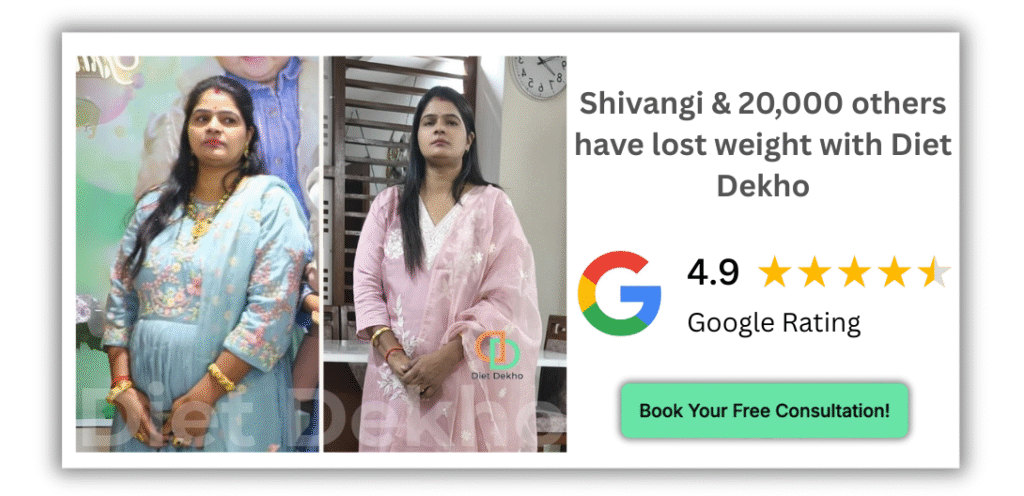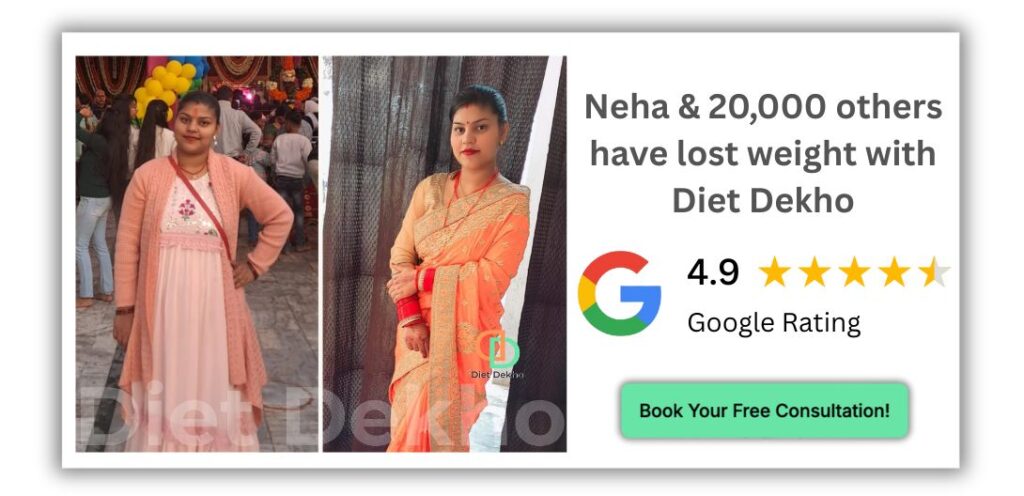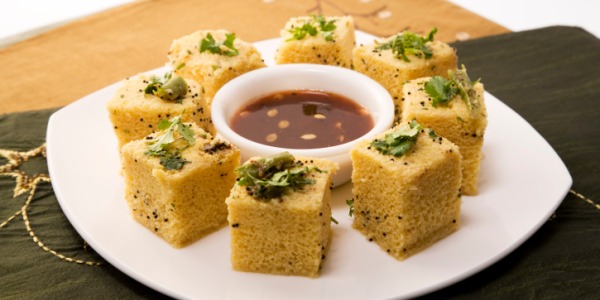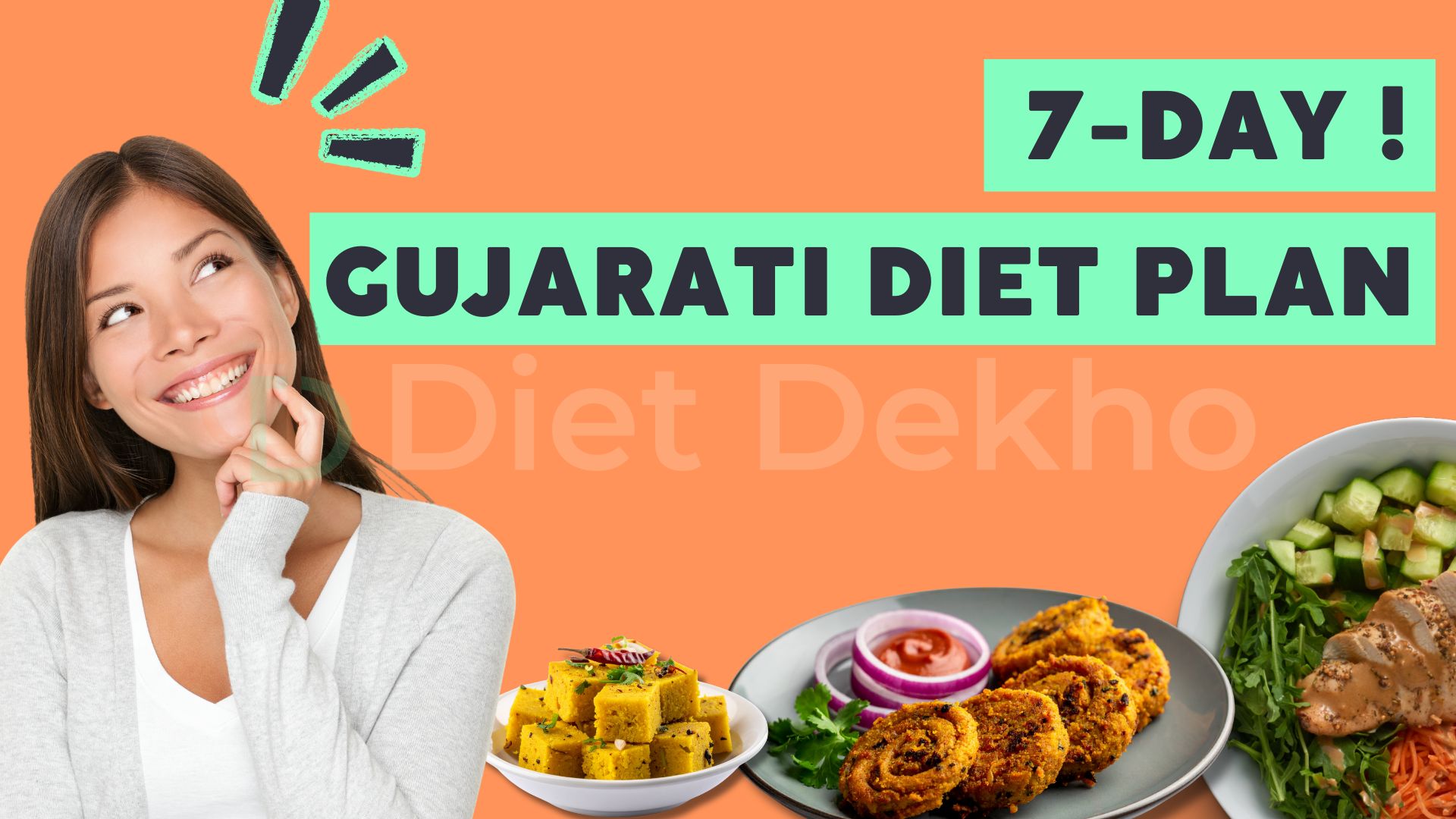Have you ever felt you have to choose between enjoying a plate of soft, fluffy dhokla and achieving your weight loss goals? For many of us who love our traditional food, this feels like an impossible choice. There’s a common belief that Gujarati food, with its delightful sweets and crispy fried farsan, is a roadblock on the path to a healthier lifestyle.
But what if I told you that the heart of authentic Gujarati cuisine is not only delicious but also perfectly designed for weight management?
This article will not ask you to give up your favorite foods. Instead, it will guide you on how to rediscover the healthy, balanced core of Gujarati cuisine. We’ll provide a practical, week-long plan to help you lose weight sustainably. We will explore how to make simple swaps, master healthier cooking techniques, and enjoy the foods you love while getting fitter. It’s time to learn how to lose weight with Gujarati food, the right way.
Deconstructing the Gujarati Thali: From 3,000-Calorie Feast to a Balanced Daily Meal
When we picture a Gujarati thali, we often imagine a large, festive platter brimming with over a dozen items—a feast that can easily surpass 3,000 calories in a single sitting. This is the image of celebration, of special occasions. But it’s not the reality of a daily Gujarati meal.
The everyday meal in a Gujarati household is a model of balanced nutrition: a simple quartet of rotli (bread), dal (lentils), bhaat (rice), and shaak (a vegetable dish). This foundation is built on wholesome staples like lentils, steamed vegetables, and whole grains, forming a naturally nutritious plate.
The primarily vegetarian nature of this diet is one of its greatest strengths. Research has consistently shown that plant-based diets are incredibly effective for weight management. A major meta-analysis published in the Journal of the Academy of Nutrition and Dietetics found that individuals who adopted a vegetarian diet lost an average of 10 pounds, often without deliberately counting calories or increasing their exercise.
This brings us to a crucial point. The problem isn’t that individual Gujarati dishes are inherently unhealthy. A single thepla has around 120 calories, and a cup of homemade dal contains about 293 calories. The real issue is the context and volume. The festive thali encourages overconsumption with multiple fried snacks, sweets, and generous use of oil. To lose weight, we need to shift our mindset from the “festive thali” to a “daily balanced plate,” applying the same food principles but with portion control and healthier choices.

The Four Pillars of a Healthy Gujarati Weight Loss Diet
To make this shift, let’s focus on four simple, powerful principles. These pillars will form the foundation of your new, healthier way of eating.
Pillar 1: Embrace Protein Powerhouses for Fullness
Protein is essential for weight loss. It keeps you feeling full and satisfied, reduces cravings, and helps maintain muscle mass as you shed fat. Luckily, Gujarati cuisine is a treasure trove of plant-based protein.
The key is to make these protein sources the star of your meals. Focus on incorporating:
- Dals: Especially moong dal and tuvar dal, which are staples in every Gujarati kitchen.
- Kathol (Pulses): Foods like chickpeas (chana), black-eyed peas (chora), and other beans are packed with protein and fiber.
- Besan (Chickpea Flour): The base for dhokla, khandvi, and pudla, besan is a fantastic source of protein.
- Yogurt and Chaas (Buttermilk): These dairy products provide high-quality protein and gut-friendly probiotics.
Start your day with a protein-rich moong dal chilla instead of a carb-heavy option. For a light yet filling dinner, consider handvo, a savory cake made from a mix of dals. A simple trick is to add sprouted moong to your kadhi, instantly boosting its protein content and nutritional value.

Pillar 2: Swap Your Grains, Fill Your Plate with Greens
The grains you choose and the balance of your plate can make all the difference.
First, let’s talk about the grain swap. While wheat rotis are common, traditional Gujarati cuisine also features incredible millet-based breads like bajra rotla (pearl millet) and jowar rotlo (sorghum). Millets are complex carbohydrates, meaning they are higher in fiber and have a lower glycemic index. This helps prevent blood sugar spikes and keeps you feeling full for much longer, making them a superior choice for weight loss.
Next, let’s redesign your plate using a simple, effective model. Experts at Harvard University developed the Healthy Eating Plate as a visual guide for balanced meals, and we can easily adapt it for our Gujarati thali. Here’s how:
- Fill half your plate with non-starchy vegetable shaak. Think bottle gourd (dudhi), okra (bhindi), cabbage, or leafy greens instead of potatoes.
- Fill one-quarter of your plate with a high-quality protein like dal, kathol, or low-fat curd.
- Fill the final quarter with a high-fiber carbohydrate, such as a single bajra rotlo or a small bowl of brown rice.
This simple rule ensures you get plenty of nutrients and fiber while naturally controlling your calorie intake.
Pillar 3: Master the Art of Healthy Cooking
Gujarati flavors are defined by their unique cooking methods, and a few small adjustments here can lead to big results.
The vaghar, or tempering, is the soul of many dishes. Instead of using several tablespoons of oil, you can create a fragrant and flavorful tempering with just one or two teaspoons. The key is to use a good quality oil like groundnut or sesame and heat it properly so the spices—mustard seeds, cumin, and curry leaves—bloom and release their aroma without needing excess fat.
Furthermore, many of our most iconic dishes are naturally healthy because they are steamed. Dhokla, khandvi, patra, and muthia are all prepared using this gentle cooking method, which preserves nutrients and flavor without adding any fat. Make these steamed delicacies a regular part of your diet.
You can even take it a step further. Complex dishes like undhiyu, often considered heavy, can be made completely oil-free. The muthias can be baked or steamed instead of fried, and the medley of winter vegetables can be slow-cooked in a pressure cooker with their own juices, resulting in a dish that is both rich in flavor and light on calories.
Pillar 4: Snack Smartly with Healthy Farsan
Snacking is often where weight loss plans fail. But in Gujarati cuisine, we have a built-in solution: healthy farsan. It’s time to draw a clear line between the deep-fried snacks to avoid—like fafda, gathiya, and fried muthia —and the nutritious options to embrace.
Instead of thinking of snacks as empty “treats,” view them as strategic “mini-meals.” Steamed snacks like dhokla and muthia are made from protein-rich dals and besan, often include fiber from vegetables, and are low in fat. This powerful combination of protein and fiber is highly satiating, meaning it keeps you full and prevents overeating at your next meal.
Here is your go-to list for healthy Gujarati snacks:
- Steamed Dhokla (made from besan, moong dal, or chana dal)
- Khandvi (delicate, rolled gram flour sheets)
- Baked or steamed Muthia (dumplings with greens or bottle gourd)
- Khakhra (choose whole grain or millet-based options)
- A bowl of sprouts or roasted chana
Plan to have one of these snacks in the mid-afternoon, a time when energy levels often dip. It will stabilize your blood sugar and keep hunger at bay until dinner.

Your Ultimate 7-Day Gujarati Diet Plan for Weight Loss (Approx. 1200-1500 Calories)
Here is a sample week-long meal plan that puts all these principles into practice. This is a balanced template designed to provide essential nutrients while maintaining a calorie deficit for weight loss. Remember to drink plenty of water throughout the day, and feel free to enjoy a glass of refreshing, unsalted chaas (buttermilk) with your meals.
| Day | Breakfast (8-9 AM) | Lunch (1-2 PM) | Evening Snack (4-5 PM) | Dinner (7-8 PM) |
| Day 1 | 1 bowl Vegetable Poha (with peas & carrots) | 2 Bajra Rotla, 1 bowl Tuvar Dal, 1 bowl Green Beans Shaak, Salad | 1 glass Chaas (Buttermilk) | 1 bowl Vegetable Khichdi with a bowl of Kadhi |
| Day 2 | 2 Moong Dal Chilla with green chutney | 1 bowl Brown Rice, 1 bowl Sprouted Moong Curry, Cucumber Raita | Handful of roasted Chana | 2 small pieces of Dudhi Handvo with mint chutney |
| Day 3 | 2 pieces steamed Khaman Dhokla | 2 Jowar Rotla, 1 bowl Panchkutiyu Shaak (mixed veg), 1 bowl low-fat Curd | 1 Apple | 1 bowl Dal Dhokli (made with whole wheat dhoklis) |
| Day 4 | 2 Methi Thepla (low-oil) with 1 bowl of Curd | 1 bowl Quinoa, 1 bowl Bharela Ringan (stuffed eggplant, baked), Salad | 1 glass Chaas | 1 bowl Moong Dal soup with sautéed vegetables |
| Day 5 | 1 bowl Masala Oats with vegetables | 2 Bajra Rotla, 1 bowl Gujarati Kadhi (no sugar), 1 bowl Cabbage Shaak | 4-5 pieces of steamed Patra | 1 bowl Vaghareli Khichdi with a bowl of vegetable raita |
| Day 6 | 2 pieces of steamed Muthia with green tea | 1 bowl Brown Rice, 1 bowl Chana Masala (low-oil), Kachumber Salad | Handful of peanuts & a pear | 2 small Moong Dal Pudla (pancakes) with mixed vegetable stuffing |
| Day 7 | 1 bowl Upma (made with semolina & vegetables) | 2 Jowar Rotla, 1 bowl Undhiyu (low-oil, baked muthia), 1 glass Chaas | 1 bowl of Papaya | 1 bowl of light Dal soup with a small bowl of steamed rice |
Your Favorite Recipes, Made Healthy
Losing weight doesn’t mean you have to eat boring food. Here’s how to adapt two Gujarati classics to fit your new healthy lifestyle.
Healthy Thepla Recipe for Weight Loss
This version packs in more fiber and nutrients while cutting down on fat.
- Ingredients:
- 1/2 cup whole wheat flour
- 1/2 cup bajra or jowar flour
- 1/2 cup grated bottle gourd (dudhi) or finely chopped fenugreek leaves (methi)
- 1/4 cup low-fat yogurt
- Spices: turmeric powder, red chili powder, asafoetida, and salt to taste
- 1 teaspoon oil (for the dough)
- Method:
- Combine all the ingredients in a bowl and knead into a soft dough using a little water if needed. The moisture from the dudhi and yogurt should be enough.
- Let the dough rest for 15-20 minutes.
- Divide the dough into small balls and roll them out into thin circles.
- Cook on a hot non-stick tava (griddle), brushing each side with just a few drops of oil until golden brown spots appear. Serve hot with a bowl of low-fat curd.

High-Protein Dhokla: The Perfect Weight-Loss Snack
By using whole lentils instead of just flour, you create a snack that’s much higher in protein and fiber, making it more filling and nutritious.
- Ingredients:
- 1 cup yellow moong dal, soaked for 4-6 hours
- 1-inch piece of ginger
- 1-2 green chilies
- A pinch of turmeric and salt
- 1 teaspoon fruit salt (like Eno)
- For tempering: 1 teaspoon oil, 1/2 teaspoon mustard seeds, a few curry leaves
- Method:
- Drain the soaked moong dal and grind it with ginger and green chilies into a smooth batter. Add a little water if necessary.
- Transfer the batter to a bowl, add salt and turmeric, and mix well.
- Just before steaming, add the fruit salt and gently mix. The batter will become light and frothy.
- Pour the batter into a greased steaming tray and steam for 15-20 minutes, or until a toothpick inserted comes out clean.
- For the tempering, heat the oil, add mustard seeds and curry leaves, and let them splutter. Pour this over the dhokla. Avoid adding sugar to the tempering water.
A single piece of this moong dal dhokla contains only about 60 calories and is rich in protein, folic acid, and B vitamins, making it a truly nutrient-dense choice.
Expert Tips for Sustainable Weight Loss, the Gujarati Way
As you begin this journey, keep these expert tips in mind for long-term success. As celebrity nutritionist Rujuta Diwekar says, “You don’t need to switch to expensive smoothies or foreign foods. India has always had the secrets to sustainable weight loss right in our kitchens — dal, roti, sabzi, and a bit of mindfulness”.
- Hydrate with Chaas: Unsalted buttermilk is a traditional probiotic drink that aids digestion, keeps you cool, and helps you stay hydrated without adding calories.
- Practice Mindful Eating: Eat slowly, away from screens. Pay attention to your body’s hunger and fullness cues, and aim to stop when you are about 80% full.
- Time Your Meals Wisely: Try to have your dinner at least 2-3 hours before you go to sleep. This gives your body ample time to digest, which can improve sleep quality and aid weight management.
- Avoid Hidden Sugars: It’s a common practice in many Gujarati households to add a piece of jaggery (gur) or sugar to dals and shaaks. For weight loss, it’s best to eliminate this habit to cut down on unnecessary calories.
- Stay Consistent: Building a healthy lifestyle is about consistency, not perfection. For more guidance on creating balanced meals, the National Institutes of Health (NIH) offers excellent resources on healthy eating plans that align with these principles.

Frequently Asked Questions (FAQs)
How can I lose weight with a vegetarian Gujarati diet?
Focus on portion control by filling half your plate with vegetables, a quarter with protein (dal, kathol), and a quarter with complex carbs like bajra or jowar roti. Choose steamed snacks like dhokla over fried farsan, and significantly reduce the amount of oil and sugar in your daily cooking.
Is Dhokla a healthy option for weight loss?
Yes, steamed dhokla is an excellent choice. It’s low in calories and high in protein, especially when made from ground moong dal or chana dal instead of just besan. The fermentation process also makes it easy to digest. To keep it healthy, use minimal oil for the tempering and avoid adding sugar.
What are some Gujarati dinner recipes for weight loss?
Light, easy-to-digest meals are best for dinner. Great options include vegetable khichdi with a bowl of kadhi, dal dhokli (made with whole wheat), a hearty moong dal soup, or a simple shaak like dudhi nu shaak with a single jowar rotlo.
How can I reduce oil in my daily Gujarati cooking?
Use non-stick cookware to minimize the need for oil. Always measure your oil—aim for 1-2 teaspoons for a vaghar. Prioritize cooking methods like steaming, baking, and pressure cooking. Many traditional recipes, including undhiyu, can be adapted to be completely oil-free.
What is a good substitute for rice in a Gujarati diet plan?
While a small portion of brown rice is perfectly healthy, you can also use other whole grains like quinoa or broken wheat (dalia) to make pulao or khichdi. When eating a meal with roti, it’s best to choose either roti or rice, not both together, to manage your carbohydrate intake.
Conclusion: Your Journey to Health, the Gujarati Way
Achieving a healthy weight doesn’t mean you have to abandon your culture or the flavors you grew up with. The traditional Gujarati diet, at its core, is balanced, nutritious, and incredibly well-suited for a healthy lifestyle. By making mindful adjustments—prioritizing protein and fiber, adopting healthier cooking methods, and practicing portion control—you can unlock its full potential.
This journey is not about restriction; it’s about rediscovering the nourishing, delicious essence of your own cuisine. Start with small, consistent changes, and celebrate the food that connects you to your roots as you build a healthier, happier you.
Ready to take the next step in your wellness journey with personalized guidance?(https://wellness.dietdekho.com/) and start building a healthier you, today.
